===
STORY AT-A-GLANCE
- Fats are the primary building block of your cell membranes. This is one of the reasons why eating the right types of fat is so important for your health and longevity
- While most nutritional experts blame the epidemic of chronic disease on the increase in sugar consumption, the role of sugar is relatively minor when compared to the impact of seed oils
- There are two basic types of fatty acids, based on how many of their carbon bonds are paired with hydrogen: saturated fats and unsaturated fats. Unsaturated fats are further subdivided into monounsaturated fats and polyunsaturated fats (PUFAs), depending on how many pairs of hydrogen atoms they are missing
- Because your tissues are made up mostly of saturated and monounsaturated fats, your body requires more of them than PUFAs
- The main dietary PUFAs are omega-3 and omega-6 fats, and while your body does need these, it needs them in relatively small quantities. The most pernicious toxin in the modern diet, and the fat you need to minimize consumption of, is the omega-6 fat linoleic acid (LA). LA makes up 60% to 80% of omega-6 fats and is the primary contributor to chronic disease

Fats — which are water-insoluble biological molecules also known as lipids
Well, after three grueling rounds of peer review over the last three months, my paper on the hazards of linoleic acid (LA), an omega-6 polyunsaturated fat (PUFA), is now published in the high impact Nutrition journal Nutrients and available for free download, here.
I couldn’t have done it without my co-author Dr. Chris D’Adamo who skillfully and diplomatically helped to navigate the minefield of peer review. Our next paper will likely be on reductive stress which is one of the most important foundational and unknown concepts in health. It helps explains why LA is so devastating to your health at a molecular biological level.
Lowering your LA is the single most important strategy you can take to not only lower reductive stress in your mitochondria, but improve your overall health. It took me over six months to create the video above and I would strongly encourage each of you to watch is several times so you embed in your brain how important avoiding LA is for your long-term health so you can develop unconscious reflex behaviors to avoid this pernicious fat.
Fatty Acid Basics
What distinguishes one fat from another is the specific combination of fatty acids it’s composed of, and the properties of fats and fatty acids depend on their hydrogen saturation and the length of their molecules, also referred to as “chain length.”
There are two basic types of fatty acids, based on how many of their carbon bonds are paired with hydrogen:
- Saturated fats are fully loaded with hydrogen atoms forming straight chains, and are typically solid at room temperature (examples include butter and coconut oil)
- Unsaturated fats have lost at least one of the pairs of hydrogen atoms from their carbon chain and come in two varieties:
- Monounsaturated fats, which are missing one pair of hydrogen atoms
- Polyunsaturated Fats (PUFAs), which are missing more than one pair of hydrogen atoms, hence the name “poly”
The loss of hydrogen results in molecules that kink or bend at each double bond. The more hydrogen pairs that are missing, the more bent the molecules, which causes the molecules to occupy more space. This is what makes the fat a liquid oil at room temperature.
In addition to varying levels of hydrogen saturation, fats also vary in the length of their carbon chains, leading to another classification scheme based on their number of carbon atoms:
- Short-chain fatty acids (SCFAs) — Two to four carbon atoms
- Medium-chain fatty acids (MCFAs) — Six to 10 carbon atoms
- Long-chain fatty acids (LCFAs) — 12 to 26 carbon atoms
- Very-long-chain fatty acids
(VLCFAs) — 26 to 30 carbon atoms
The chain length and hydrogen saturation level control a fat’s melting point. As chain length increases, melting point increases. Likewise, fats that are solid at room temperature (butter, coconut oil) have longer chain lengths than fats that are liquid at room temperature (fish oil, olive oil). With chain lengths being equal, the polyunsaturated fats found in seeds oils have lower melting points than saturated fats.
Omega-3 and Omega-6 Basics
PUFAs can also be subdivided into omega-3 and omega-6 fats. The end of the fatty acid chain that is opposite the acid end is the “omega end.” The location of the first double bond from the omega end dictates whether a fatty acid is an omega-3, omega-6, omega-9 (oleic acid) or another member of the omega family.
The most pernicious toxin in the modern diet, and the fat you need to minimize consumption of, is the omega-6 fat linoleic acid (LA). LA makes up 60% to 80% of omega-6 fats and is the primary contributor to chronic disease.
To be clear, it’s only toxic when consumed in excessive quantities, but the vast majority of people nowadays consuming far more than the ideal amounts. The history of how seed oils ended up replacing far healthier animal fats is detailed in the video above.
Many still believe that if you have a distorted omega-3 to omega-6 ratio, the solution is simply to consume more omega-3, but that’s a serious mistake. While you certainly need a certain amount of omega-3s for good health, adding excessive omega-3s is a prescription for disaster, as omega-3 is also a PUFA.
So, when consumed in excessive quantities, omega-3 will cause metabolic damage similar to that of LA, as it breaks down into dangerous metabolites known as ALEs (advanced lipoxidation end products).
Commonly Confused Fats
It is also important to highlight a primarily plant-based omega-3 fat called alpha linolenic acid (ALA). ALA should not be confused with LA, as they are quite different from a biological standpoint. LA is an omega-6 fat and ALA is an omega-3 fat.
Also, do not confuse LA with CLA (conjugated linoleic acid). Although CLA is an omega-6 fat and most think CLA and LA are interchangeable, they’re not. CLA has many potent health benefits and will not cause the problems that LA does.
The Problem With PUFAs
As a general rule, vegetable and seed oils are high in PUFAs and low in saturated fats while animal fats are the converse. Saturated and monounsaturated fats are more easily used by your body than PUFAs, hence animal fats are generally healthier than seed oils.
“One significant problem with PUFAs is that they are chemically unstable, which makes them highly susceptible to being damaged by oxygen species generated from the energy production in your cells.”
Because your tissues are made up mostly of saturated and monounsaturated fats, your body also requires more of them than PUFAs. The main dietary PUFAs are omega-3 and omega-6 fats, and while your body does need these, it needs them in relatively small quantities.
One significant problem with PUFAs is that they are chemically unstable, which makes them highly susceptible to being damaged by oxygen species generated from the energy production in your cells. This damage causes them to form ALEs, which in turn generate dangerous free radicals that damage your cell membranes, mitochondria, proteins and DNA.
What’s worse, PUFAs are integrated into your cell membranes and can remain so for five to seven years. The missing hydrogen atoms also make PUFAs highly susceptible to oxidation, which causes the fat to break down into harmful metabolites such as OXLAMs (oxidized LA metabolites), which have a profoundly negative impact on your health.
LA Is Not an ‘Essential’ Fat
“Essential fatty acids” (EFAs) is a term referring to the PUFAs that scientists believe are crucial for health and that your body cannot produce. Hence, you have to get them from your diet. Currently only two types of fats are considered “essential”:
- Omega-3 (EPA, DHA, and ALA)
- Omega-6 fat (LA)
The inclusion of LA is unfortunate, as excessive amounts of LA actually wreck your cellular and mitochondrial function. The reality is you need very small amounts of LA, and because it’s found in most foods, it’s virtually impossible to become deficient. Moreover, modern research has shown that up to 10 generations of animals can be raised without any LA in their diet whatsoever and remain perfectly healthy.
Research has also shown that when you have a large amount of LA in your diet, an enzyme called delta-desaturase — which converts the plant-based omega-3 fat, ALA, to the long-chain fats DHA and EPA — is inhibited. So, consuming high amounts of LA increases your dependence on sea food as a source of preformed EPA and DHA.
This is important, as DHA and EPA are indeed essential and provide a wide range of health benefits. One of the most important benefits of DHA is lowering inflammation, which is a factor in most chronic and degenerative diseases. EPA, meanwhile, is important for heart and cardiovascular health.
Seed Oils Are the Root of All Chronic Diseases
The video above reviews the health risks associated with vegetable oils and seed oils, which are found in most processed foods. It shows how chronic diseases such as heart disease began to skyrocket after the introduction of these oils to the market.
Before 1866, the Western world for the most part only consumed animal fats. Tallow, suet, lard and butter are examples of these fats. Eastern societies used cold-pressed fats like coconut and palm oil. Vegetable oils like we know them today simply did not exist.
The single-greatest change to the human diet in all of history was the introduction of industrially processed seed oils around 1866.
At that time Procter & Gamble used a newly invented hydrogenation process to convert surplus unusable cotton seeds into a synthetic seed oil, sold to this day under the name Crisco.
Shortly after that, margarine, which is made from seed oils, was introduced. In recent years the company has largely converted to using palm, soy and canola oil for its Crisco, but cottonseed oil is still very much in use for cooking, especially in restaurants for their fryers.
Historically, we can see that seed oil use increased from approximately 2 grams per day in 1865, to 5 grams per day in 1909, to 18 grams a day in 1999. As of 2008, the average consumption was 29 grams a day. In terms of percentages, seed oils accounted for approximately 1/100th of total calories in 1865 and increased to more than 1/4th of total calories by 2010 — a 25-fold increase!
Seed Oils Are Far Worse Than Sugar
While most nutritional experts blame the epidemic of chronic disease on the increase in sugar consumption, the role of sugar is relatively minor when compared to the impact of seed oils.
In 1822 the average U.S. sugar consumption was 6 pounds per person per year. This rose to a high of 108 pounds per person per year by 1999.
This is a 17-fold increase, but seed oils went up 25-fold during that same time period.
In the 1960s and ‘70s,
cardiologist Dr. Robert Atkins was largely responsible for creating the interest in low-carb (low-sugar) diets that seemed to work for many. However, eliminating foods like french fries, potato chips, breads, pasta, pizza and donuts not only eliminates sugar-based carbs, but also seed oils. It is not intuitively obvious, but the carb-loaded foods his diet eliminated are also loaded with dangerous refined seed oils.
Processed foods typically contain about 21% sugar. However, up to 50% or more of the overall calories contained in most processed foods come from seed oils.
The connection is further confirmed by looking at the U.S. carb consumption. It’s been declining since 1997, yet obesity and Type 2 diabetes have steadily increased. Interestingly, this continued rise coincides with the surge of seed oil consumption.
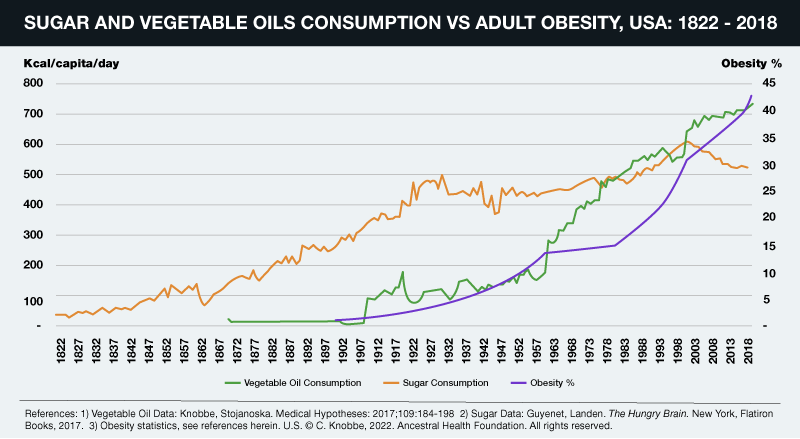
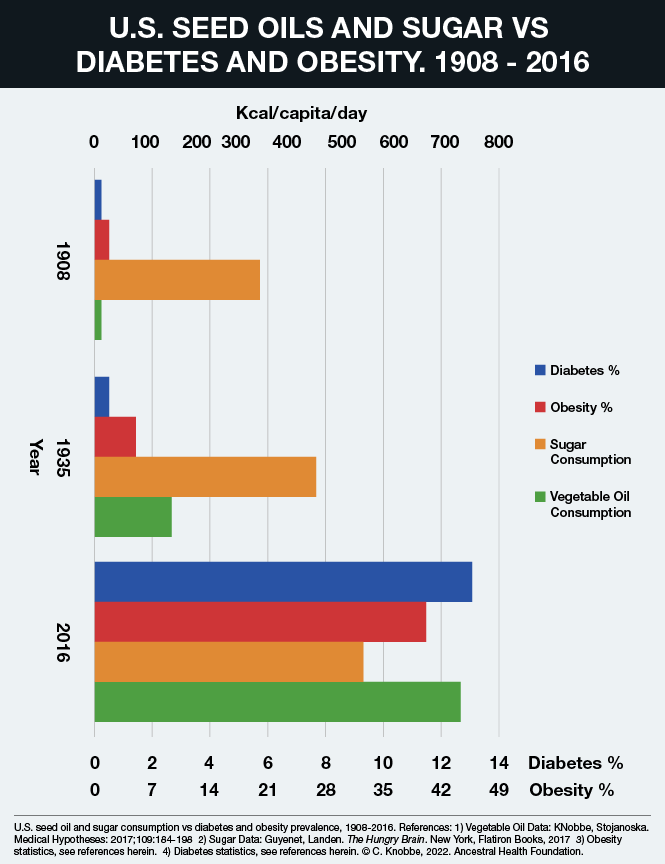
Another major reason why seed oils are exponentially more pernicious to your health than sugar is that they last much longer in your body. The half-life of LA is around 600 to 680 days, or approximately two years. This means it will take you about six years to replace 95% of the LA in your body with healthy fats. This is the primary reason for keeping your LA intake low as possible.
Meanwhile, your glycogen stores will be exhausted in about one to two days. So if you go on a sugar binge, that sugar doesn’t stick around for years destroying your health like the LA in seed oils does.
How Excess LA Consumption Can Wreck Your Health
The main reason why excess LA causes disease is that it prevents your mitochondria from working well. Mitochondria are subcellular organelles responsible for producing most of your cellular energy in the form of ATP, and without ATP, your cells cannot function and repair themselves normally.
As mentioned earlier, PUFAs such as LA are easily damaged by oxygen in a process called oxidation,
which triggers the creation damaging free radicals.
These, in turn, give rise to ALEs
and in the case of omega-6 fats, OXLAMs.
These ALEs and OXLAMs then go on to cause mitochondrial dysfunction, which is a hallmark of most all chronic disease. In addition to oxidation, inflammation and mitochondrial dysfunction, processed seed oils can also:
- Damage the cells lining your blood vessels
- Cause memory impairment and increase your risk of Alzheimer’s disease (canola oil, in particular, has been linked to Alzheimer’s)
- Strip your liver of glutathione thereby lowering your antioxidant defenses
- Inhibit delta-6 desaturase (delta-6), an enzyme involved in the conversion of short-chained omega-3s to longer chained omega-3s in your liver
- Impair your immune function and increase mortality
- Make your fat cells more insulin sensitive, thereby causing insulin resistance
- Inhibit cardiolipin, an important fat in the inner membrane of your mitochondria
The Importance of Cardiolipin
The inhibition of cardiolipin in the inner membrane of your mitochondria explains much of the damage caused by LA. You have about 40 quadrillion to 100 quadrillion mitochondria throughout the cells of your body. The cristae of the inner membrane of the mitochondria contains a fat called cardiolipin,
and its function is dependent on the type of fat you get from your diet.
Cardiolipin is important because it influences the structure of the cristae inside your mitochondria, which is the area where energy production occurs. If cardiolipin is damaged, then the complexes will not be close enough together to form supercomplexes and thus the mitochondrial energy production will be impaired.
Cardiolipin also works like a cellular alarm system that triggers apoptosis (cell death) by signaling caspase-3 when something goes wrong with the cell. If the cardiolipin is damaged from oxidative stress due to having too much LA, it cannot signal caspase-3, and hence apoptosis does not occur.
As a result, dysfunctional cells are allowed to continue to grow, which can turn into a cancerous cell. The type of dietary fat that promotes healthy cardiolipin is omega-3 fat, and the type that destroys it is omega-6, especially LA.
The image below illustrates a typical mitochondria on the left. Figure C shows how the folds cause cardiolipin to provide the curve in the mitochondrial cristae. The folding causes the super complexes in the electron transport chain to get closer together and more efficiently transfer electrons to produce ATP.
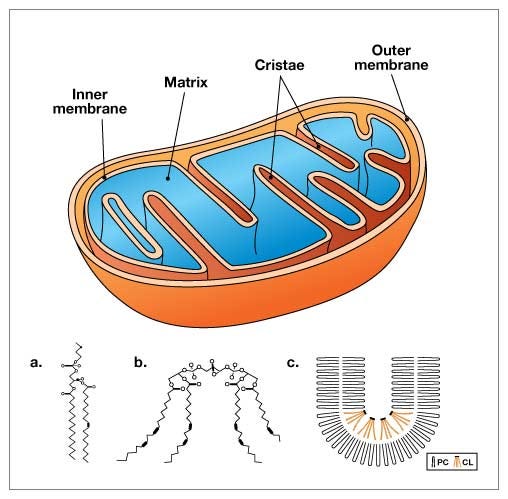
The good news is that dietary changes can improve the composition of fats in your cardiolipin in a matter of weeks, or even days. So, even though it will take years to lower your total body burden of LA, you will likely notice improvements well before then.
LA Contributes to Heart Disease and Cancer
Heart disease and cancer are two of the primary killers in the Western world, and LA is a significant contributor to both of these lethal conditions. One of the first things that happens in atherosclerosis, which is the precursor to heart disease, is that your macrophages (a type of white blood cell) turn into foam cells — essentially a macrophage stuffed with fat and cholesterol.
Atherosclerotic plaque is basically dead macrophages and other types of cells loaded with cholesterol and fat. This is why heart disease is blamed on saturated fat and cholesterol. However, researchers have found that for foam cells to form, the LDL (low density lipoprotein cholesterol) must be oxidized, and that is precisely what seed oils do.
Seed oils cause the LDL to oxidize, thereby forming foam cells. So, LDL in and of itself does not initiate atherosclerosis. LDL’s susceptibility to this oxidative process is controlled by the LA content of your diet. Excess PUFAs also make cell membranes more fragile, allowing them to be easily damaged by oxidation.
Seed oils are also a major contributor to cancer. In fact, a surefire way to induce cancer in many animal models is to feed them seed oils. Animals typically develop cancer once the LA in their diet reaches 4% to 10% of their energy intake.
And, as mentioned, most Americans get approximately 25% of their total daily calories from seed oils, so we’re far over the safety threshold for these fats — at least based on the laboratory work in animals. Remember our ancestors typically got less than 2% of their calories in the form of omega-6.
There’s even evidence showing that eliminating seed oils from your diet will dramatically reduce your risk of sunburn and lower your risk of skin cancer,
as susceptibility to UV radiation damage is controlled by how much LA is in your diet.
What Foods to Avoid, and How
Primary sources of LA include seed oils used in cooking, processed foods and restaurant foods made with seed oils, condiments, seeds and nuts, most olive oils and avocado oils (due to the high prevalence of adulteration with cheaper seed oils), and animal foods raised on grains such as conventional chicken and pork.
Ideally, consider cutting LA down to below 7 grams per day, which is close to what our ancestors used to get. If you’re not sure how much you’re eating, enter your food intake into Cronometer — a free online nutrition tracker — and it will provide you with your total LA intake.
Cronometer will tell you how much omega-6 you’re getting from your food down to the 10th of a gram, and you can assume 90% of that is LA. Anything over 10 grams of LA is likely to cause problems. Healthy fat replacements include tallow, butter or ghee, all of which are excellent for cooking.
The table below provides a fairly comprehensive list of the most commonly consumed oils and their approximate LA content.
In general, the lowest LA-containing fats — butter and beef tallow — would be the fats of choice. These excellent cooking fats would not only be the lowest in LA, but will also provide the fat-soluble vitamins, A, D, and K2. Coconut oil is also very low in LA but doesn’t provide the important fat-soluble vitamins that tallow and butter contain.
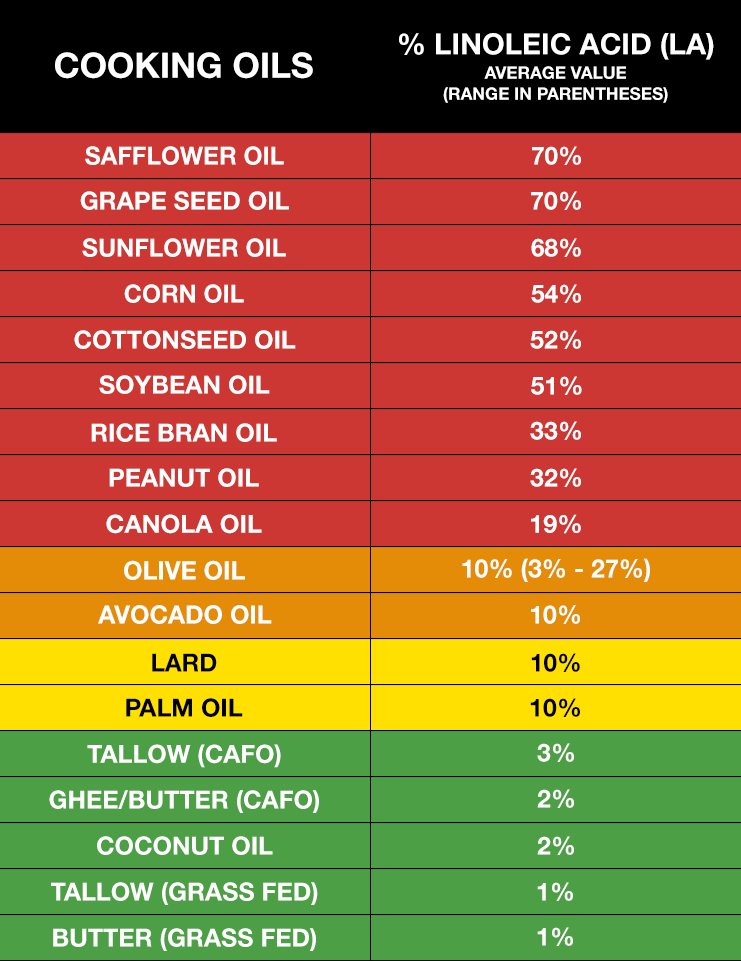
Vast Majority of Olive Oil and Avocado Oil Are Adulterated
Most people introduced to the topic of omega-6 toxicity have questions about olive oil and avocado oil. Consumption of olive oil has increased more than 10-fold in the U.S. over the past 35 years.
Olives and olive oil are well-known for their many health benefits, especially for your heart, but using adulterated olive oil will not do your health any favors.
Tests have revealed that anywhere from 60% to 90% of the olive oils sold in American grocery stores and restaurants are adulterated with cheap, oxidized, omega-6 vegetable oils, such as sunflower oil or peanut oil, or nonhuman-grade olive oils, which are harmful to health in a number of ways.
This is even true for “extra virgin” olive oil Cheap seed oils are added and will not be listed on the label, nor will most people be able to discern that their olive oil is not 100% pure. Chances are, you’ve been eating poor-quality olive oil so long — or you’ve never tasted a pure, high-quality olive oil to begin with — you don’t even realize there’s something wrong with it.
The same applies to avocado oil. Many believe avocado oil is as healthy as olive oil, but this is simply not the case. A 2020 study showed that 82% of avocado oil is adulterated, mislabeled or of poor quality.
In general, people believe the U.S. Food and Drug Administration is policing and regulating food fraud, but that’s not the case. Its primary focuses are making sure the ingredient label is accurate and tracking food-related disease outbreaks.
The FDA does little in terms of preventing illegally adulterated foods from being sold. This makes discerning quality a difficult task, and unless you can somehow ensure you’re getting 100% pure, unadulterated olive oil and/or avocado oil, you’re better off avoiding them altogether.
Go Easy on the Nuts and Seeds
Most people who are interested in health believe that nuts and seeds are “heart healthy” staples.
However, as you can see in the table below, most nuts and seeds are exceedingly high in LA. For example, 50% of the fat in pecans is LA.
The only exception is macadamia nuts.
So, while nuts and seeds are often unprocessed and are the best type of omega-6 fats to eat, they will still contribute to the LA content of your diet, and once you hit 5 grams of LA per day, the perishable double bonds will begin to oxidize and generate dangerous free radicals that lead to health problems.
So, nuts and seeds need to be significantly minimized or even eliminated if you want to lower your LA. As mentioned, the exception to this rule is macadamia. Since only 2% of their fat is LA, you can have 10 to 30 a day without significantly raising your LA level.
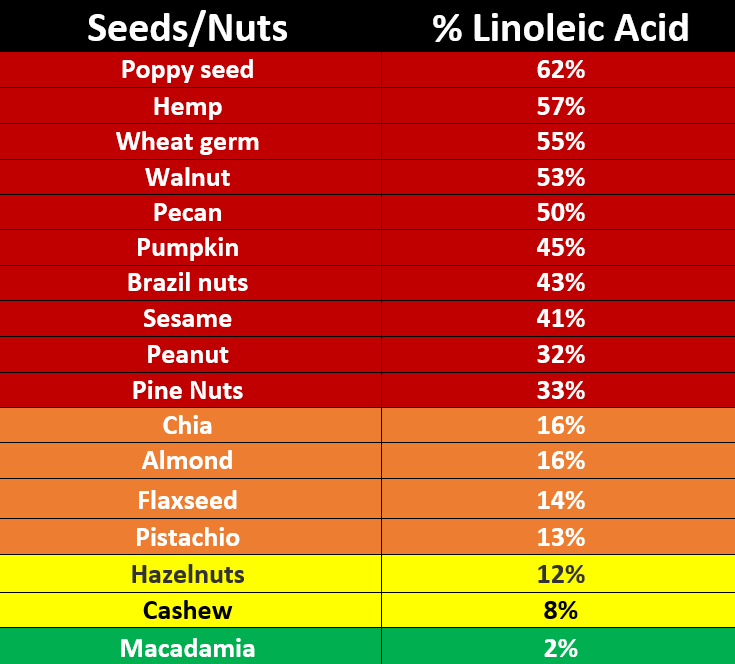
LA in Animal Foods
While seed oils are a primary source of LA, a number of animal foods you might not suspect are also loaded with this harmful fat. Ruminant animals such as cows, buffalo, sheep, lamb, goats, deer, elk and many other game animals have low LA content in their milk and meat, no matter what they eat, thanks to the fact that they have multiple stomachs with bacteria that can convert the high LA fat they eat into saturated and monounsaturated fats.
Animals with a single stomach, however, like chickens and pigs, cannot make this conversion. So, when they’re fed corn and soy, which are high in LA, their meat and eggs will also be high in LA.
Most chicken and pork have over 25% LA. Chicken eggs are acceptable, though, as each egg has less than 1 gram of LA, and that is assuming they are fed commercial feeds that are loaded with high LA.
Interestingly, the difference in LA in ruminants that are 100% grass-fed and those that are fed corn and soy is only about 0.5%, which is why, from an LA perspective, there isn’t much difference between conventional beef and grass fed-only beef. That said, grass fed beef is still preferred as it typically has less glyphosate and hormones.
So, in summary, your best option is to get most of your animal protein from ruminants and avoid or limit all chicken and pork. My favorite meats are bison and lamb, but any of the ones listed above will work. Ideally it should be organic and the animals should not be fed any food that is contaminated with glyphosate or other pesticides.
LA in Seafood
Ideally, you’d get your omega-3s from healthy seafood. However, not all seafoods contain omega-3s. Only fatty, cold-water fish do. Examples include wild-caught Alaskan salmon, sardines, anchovies, mackerel and herring.
Farmed fish, especially farmed salmon, is best avoided altogether due to the exaggerated potential for contamination. At first glance, farmed fish may seem like a good idea to help protect wild seafood populations from overfishing, but in reality, the industry is plagued with many of the same problems surrounding land-based concentrated animal feeding operations (CAFOs), including pollution, disease, toxicity and inferior nutritional quality.
Most farmed fish are fed genetically engineered (GE) corn and soy, which are a completely unnatural diet for marine life and are loaded with hazardous omega-6 fats. Others are fed fishmeal, which is known to accumulate industrial chemicals like PCBs and dioxins.
From a nutritional perspective, farmed salmon also have the drawbacks of containing only half the omega-3 of wild salmon,
and one-fourth the vitamin D,
while having more than 5.5 times the amount of omega-6.
Farmed salmon are also routinely exposed to antibiotics and pesticides.
Carnosine Can Help Reduce LA-Induced Oxidative Damage
While your body will slowly eliminate stored LA over time, provided you reduce your intake, a peptide supplement called carnosine can help reduce the oxidative damage caused by LA while your body is cleaning itself out.
Carnosine is a dipeptide your body makes and it consists of two amino acids, beta-alanine and histidine. It serves as a sacrificial sink for reactive oxygen species (ROS) and ALEs, meaning it lets these very damaging molecules destroy it rather than your mitochondria, DNA or proteins, as depicted in the image below.
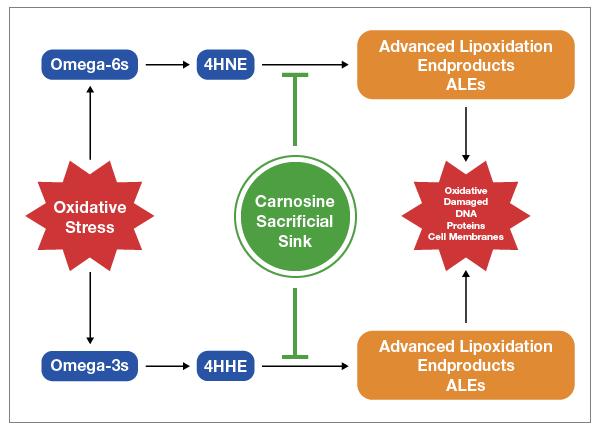
Carnosine is found in meats, and eating animal protein is known to efficiently raise carnosine levels.
It’s not found in any plant foods. Alternatively, you could use a supplement. In this case, beta-alanine is a superior choice, as it’s the rate limiting amino acid in the formation of carnosine and raises carnosine levels more efficiently. It’s also far less expensive than carnosine.
Summary
Do yourself and your family a favor and embark on a journey of eliminating all seed oils from your diet today to ward off virtually all chronic degenerative diseases. This means avoiding all seed oils, and even fruit oils like olive oil and avocado oils as they are frequently adulterated with cheap seed oils.
Cook with ghee, butter or beef tallow, and avoid all processed foods, as they are typically loaded with seed oils. Also avoid eating in restaurants, as nearly all use massive amounts of seed oils to cook with and put it in their sauces and dressings. Lastly, avoid chicken and pork, and stick to bison and lamb as your primary meat sources.
Disclaimer: The entire contents of this website are based upon the opinions of Dr. Mercola, unless otherwise noted. Individual articles are based upon the opinions of the respective author, who retains copyright as marked.
The information on this website is not intended to replace a one-on-one relationship with a qualified health care professional and is not intended as medical advice. It is intended as a sharing of knowledge and information from the research and experience of Dr. Mercola and his community. Dr. Mercola encourages you to make your own health care decisions based upon your research and in partnership with a qualified health care professional. The subscription fee being requested is for access to the articles and information posted on this site, and is not being paid for any individual medical advice.
If you are pregnant, nursing, taking medication, or have a medical condition, consult your health care professional before using products based on this content.







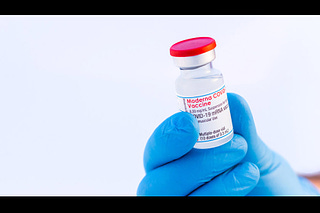

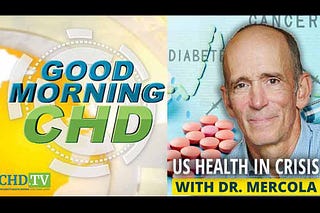
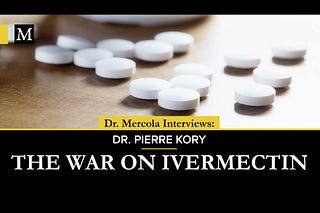





May 8
A report of great informative content that constitutes a call to health with the good management of fatty acids. Cardiolipin (CL) plays an essential role in the maintenance of mitochondrial ultrastructure and function in multiple cell types. Aberrant CL metabolism has been directly linked to a number of physiologic and developmental abnormalities, including embryonic lethality, cardiomyopathy, immune cell defects, hematopoietic stem cell dysfunction, neuronal dysfunction, and metabolic disorders.
Clinical and experimental studies in human patients and animal models have also provided convincing evidence that abnormal cardiolipin content, acyl chain composition, localization, and oxidation level may be directly related to multiple diseases, including cardiomyopathy. , neuronal dysfunction, immune cell defects and metabolic disorders. The central role of CL in regulating the pathogenesis and progression of these diseases has attracted increasing attention in recent years. CL is crucial for regulating various mitochondrial functions, ranging from respiration and metabolism to apoptosis.
CL may also play an important role in the regulation of mitochondrial metabolism. The mitochondria is not only the powerhouse, but also one of the central organelles of metabolism, participating in numerous metabolic processes, including the citric acid cycle, fatty acid oxidation, amino acid synthesis and degradation, as well as of iron and sulfur groups. It has been shown that CL can interact with several mitochondrial transporter proteins. A 20-25% loss of the amount of CL has been found in ischemic hearts, and interestingly, such a reduction in CL levels seems to precede losses in other phospholipids.
Reduced total CL content and changes in CL species composition have been detected in both aged human hearts and patients with heart failure. CL may also function as a key player in regulating mitochondrial function and structure in immune cells, and consequently also in their fate and cellular fitness. Normal CL biosynthesis has been shown to be essential for hematopoietic stem cell differentiation. CL can regulate the function and survival of β cells. In adipose tissue, lipid metabolism pathways can be significantly activated during cold adaptation, further highlighted by the upregulation of CL, especially newly synthesized CL in brown and beige adipose tissues. Indeed, CL biosynthesis plays an essential role in maintaining energy homeostasis and insulin sensitivity.
https://www.mdpi.com/2073-4425/13/10/1889 (2022)
Astrocytes become very important during oxidative stress by triggering the inflammatory response by increasing the levels of proinflammatory cytokines such as TNFα, IL-1β, IL-6, IL-18 and COX-2 messenger RNA, whose levels are altered during oxidative stress. inflammatory processes. Astrocytes are also affected upon the release of neurotrophic factors, including GDNF, BDNF. GFAP is involved in the maintenance of cellular cytoarchitecture (CNS), mechanical stability, and synaptic function, properties that are markedly affected by aging. For example, decreased GFAP expression, which reflects astroglial degeneration, has been found in the early stages of many neurodegenerative diseases. Current evidence clearly indicates that neuroinflammation plays an important role in the etiology and development of several neurological disorders, including neurodegenerative diseases such as AD and Parkinson’s disease, and psychiatric conditions, including major depression, bipolar disorders, mental disorder, post-traumatic stress and as an effect of prolonged periods of immobilization, as occurs in bedridden patients or hospitalized in intensive care units and that lead to
frank decrease in the functionality and independence of individuals.
https://www.sciencedirect.com/science/article/abs/pii/S0014482723000381 (2023).—-
https://neurologia.com/noticia/8354/la-proteina-acidica-fibrilar-glial-(gfap)-podria-convertirse-en-una-potente-herramienta-diagnostica-en-sangre-de-las-fases- initials-of-alzheimer’s (2021).—
https://www.ncbi.nlm.nih.gov/pmc/articles/PMC6763158/ (2001).—
https://www.cambridge.org/core/journals/the-british-journal-of-psychiatry/article/neuroimaging-findings-in-posttraumatic-stress-disorder/156E2575B0C6B0132B4BCF95302A976B (2002).—
Jul 17
I posted this question for Dr. Mercola, but wanted your opinion, too. What about Omega 7, such as 100% pure organic Sea Buckthorn berryJuice? There’s lots of literature claiming the health benefits, but not sure how it compares to omega 3 Krill oil, or if it’s got drawbacks like omega 6 from seeds.
May 8
Thank you, Dr. Mercola. Much gratitude to you. May God bless you more abundantly.
May 9
Amazing job, definitely going to try to show this to my family as much as I tried to warn otherwise. They did switch to cooking with lard at least half the time or more, but they don’t understand amounts, and use olive and (roasted) pumpkin seed oil almost every day as dressings and whatnot.
May 10
So if Olive oil and avocado oil is no longer acceptable what do I use for a salad dressing? Do I try to find “real” olive oil? Is MCT Oil ok or not ok?
Jun 2
In Spain, the most commercialized variety of oil is Picual. One of the most remarkable characteristics of the Picual Olive is its high content of oleic acid, only 80% of the total composition. This, together with its low omega 6 content (less than 5%), makes Picual olive oil one of the most permissive oils with regard to oxidation and rancidity. This gives it certain ideal characteristics, such as its great resistance to oxidation during exposure to high temperatures. Raw, it has an intense flavor and a certain bitterness that is sought after by many consumers. Always consume cold pressed and organic
Jul 15
I recommend coconut oil due to the medium-long chain fat Lauric acid. The more ones lipid profile becomes saturated, the higher their metabolism will be. Our bodies do not have a desaturate enzyme for Lauric acid, so it is an excellent way to re-saturate.
May 11
I make dressing with homemade yogurt. You can use lemon juice on a salad with salt and pepper.
May 16
Dr. Mercola, I have a family member who’s a pre-diabetic physician (and statin user) that sent me this link in response to me sharing this article – https://www.hsph.harvard.edu/nutritionsource/2014/11/05/dietary-linoleic-acid-and-risk-of-coronary-heart-disease/ citing “opposing views / controversy to what is shared above” and they don’t believe it … I’m having a difficult time letting it go. Serious question for anyone who has read the Harvard study as it feels difficult to trust anything coming out of Harvard as it relates to big ag / big pharma supported labs and universities, and hopeless to convince the family member of their seed oil fueled dependence on statins, a crummy diet.
Dr. Mercola – have you or anyone ever debunked the Harvard link above? Any help appreciated!
May 24
A quick note, the article discusses how it lowers LDL and total cholesterol. There’s no evidence that on a standalone basis improves health outcomes. The oxides took of the LDL is most important along with cell membrane. Basically, just cause LDL is lowered doesn’t mean it’s good.
May 30
There are numerous studies that show how seeds oils damage our health, there are a number of studies that show positive effects. How can this be? Its worth looking at the mechanisms to square this up.
Linoleic acid is a PPAR-g activator. PPAR-g activation is the mechanism of a class of drugs called thiazolidinediones because doing so improves insulin sensitivity (and, thus, energy uptake into cells). However, this has disproportionate effects on fat cells. In other words, linoleic acid diverts energy away from the liver and into the fat cells. Less fat arriving into the liver, lower lipids in the bloodstream. This is why we see a consistent lipid-lowering effect. It’s fairly reliable. But you also store more energy in the fat cells (and, indeed, the recognized side effect of the thiazolidinediones is that they make you insulin-sensitive-but-fat).
But, as with most things in the human body, its more complicated. If the fat cells are asked to take up more than they are capable of (they become full), they stop responding to insulin. This means they no longer take up the energy from the bloodstream. and now spew out fatty acids constantly. Fat cells are meant to release fatty acids during fasting, but its vital that they stop doing this after a meal (when glucose and, subsequently, insulin rise). The spike in insulin should stop the release of these fatty acids but doesn’t due to the failed response in these broken fat cells. Now the liver is pounded with both glucose (from the meal) and fatty acids (from the fat cell). Cellular physiology dictates it cannot do both at the same time (see the Randle cycle) and so now downregulates its own response to insulin as a protective response. Now there is insulin resistance at the liver, which leads to a whole host of issues with both health and weight management.. It also means that the linoleic acid now accumulates in the liver/bloodstream, where it is vulnerability to oxidation can now drive a host of problems you no doubt hear about and are well-documented in many mechanistic studies.
This is why you would expect to see researchers take a batch of health volunteers, without obesity or oxidative stress and eating low-calorie diets, and follow them for six months and see their cholesterol reliably drop and little in the way of negative effects. Yet what would we expect to see in the real world, in, say, Western populations that typically consume more than they need, don’t exercise and have low-grade inflammatory burdens? Well, you’d expect to see a direct correlation between the introduction of seed oils and obesity, as well as a host of other metabolic problems. You’d expect to see people who’ve felt below-par and struggled to lose weight for many years ‘go paleo’ and report surprising success. And you’d also expect to see the nutritional community arguing about whether seed oils are ‘good’ or ‘bad’. In other words, exactly what we see.
Hope that was a good summary of a subject that probably deserves another few thousand words…
Jul 3
I did read & listen to all of these…!
My 1st thot on Harvard is their promotion of these highly chemically and hi heat processed oils…!
I realized there was NO mention of the ensconced GMO seeds NOR pesticides + herbicides used with the crops themselves…!
THIS WAS A GLARING ERROR
*I l99k forward to a far more indepth layout of health values with breakdown on nuts and seeds in their natural forms…!!!
May 29
Great Article busting myths of what most people are chronically ill. I am plant based my self as I find it hard to take a life and it had worked well for me. I read all the books that are Pro Meat so I always know both sides of the argument. Although I get the science of the meat side, for me it does not add up as all my markets are perfect (good triglycerides/HDL and Total Cholesterol/HDL as well as perfect blood pressure) and everyone asked me how I look phisicually 36 and no fat on me when im 46 (not ego here just to illustrate that I am not suffering from malnutrition). I have been eating plants (with maybe once a month some local white fish or none at all, mostly because I go to dinner with friends to nice places and get bored of eating just a salad in font of everyone) for 15 years and according to all the pro meat science on nutrition, I should have every chronic disease possible because I supposedly cant get the key vitamins and minerals unless I eat meat. So Although I see both sides of science, even how it has possibly been squed by the Cabal Agenda, my personal experience and that of my kids does not add up to it. Something is missing and no one has been able to give me a satisfactory explanation, although I have my own theories. Just like the Olive Oil is deadly for you, when it has been consumed in the Mediterranean for thousands of years probably and we (I grew up there) have some of the longest life epectancy in the world. Obviously best to eat good quality Virgin Cold Pressed as opposed to heated up in pan. I have followed Dr M for many years now and he always seems to make the same generalisations. So everyone eats crap quality Olive Oil so its bad for you, another one is if you eat plant based you need to eat meat because its better for you as you must be eating processed fake crap meat etc, which in my case is the opposite of what I eat. Anyway, some more clarification on these gray area statements would be appreciated.
Jun 1
Hi. Thank you. I am vegan and generally eat seeds and nuts and peanuts. The ones I choose are low on the list but as I age I find my markers could be better. I’m hoping that supplementation with carnosine could be helpful. May I ask what your opinion would be? 💞
Jun 1
PS I take Dr M’s H2. That should help. Hmmmmm.
May 30
yeah I quit eating anything with LA in it…..I now eat MEAT..90% of what I eat is beef……right outta my freezer…the other 10% is fruit and real honey…and I do chug down 2 H2 pills in hot water , naturally Mercola H2 in about 6-8 oz a hot water drop in 2 tablets and swish them around for 10 seconds and Down the hatch…….maybe have a steak for breakfast…with a Egg-cream-honey mix.(eggnog) use 3- egg yokes only………MMMMMMMM next meal in about 16 hours…..and this is a long lasting meal…..
~~~~~~~~~~~~~~~~~~~~~~~~~~~~~~~~~~~~~~~~~~~~~~~~~~~~~~~~~~~~~~~~~
This only a part chapter from this great book “Invisible Rainbow” and excellent read….Interesting how Radio Frequency Radiation Killed Millions including a Queen But Marconi didn’t care…with known scientists and proven medical people stating it is a dangerous act..Proven inventors like Tesla and JG Bose and many more…. Marconi went ahead and eventually killed himself.. but ‘Pandora’s Box’ was opened wide……read a bit of the results >>> http://www.thethirdlevel.info/2021/04/marconi-bees-frequencies-queen.html <<<
Jun 1
I thought the H2 pills needed 90 seconds before swallowing. So you think and it makes chemical sense to counteract linoleic acid if one is vegan? Thank you. 💕
Jun 1
Thank you for this important information. Mercola Liposomal Vitamin C has sunflower oil as its liposome. Is this safe? My husband had a heart attack and has several arterial blockages so important to be safe on seed oils.
Jun 27
The amount O6 you’re getting with that is in the mg amount. But why not get whole food vitamin C from fruits, and safe the liposomal for when you’re sick only? Also I wonder why the sunflower oil in some of his products aren’t replaced with either olive or MCT oil.
Jun 1
Excellent. Can we use carnosine or that less expensive form as protection against APEEL?
Jun 2
Wow PremaShakti……I have no idea as I am not a vegan…..in my teen years I was into a vegan type of lifestyle but felt bloated and gassy a lot….not comfortable…and now decades later i know vegan was not my way of life……so I started reading more on Dr Paul Saladino and his medical diet of beef , MEAT and organ meats…..now as I was growing up, my Mother always had a Liver dinner…..and I like Liver and onions……and always felt great the next few days…..well putting 2 to 2 coming up with 4 and realized liver was making me feel good…………..so now all I eat is MEAT and Ill eat the organs too
Now I am and Old man 75++and watching eagles and hawks and ravens and owls…and when a hawk attacks an animal the first thing they eat is the Liver and heart,,,,First thing….. even chickens and they will eat each other…first thing they will eat is the Liver and Heart….why?
Well as a vagen you consume a lot of phytic acid…..and Phytic acid is on every seed….one reason why coffee tastes bitter z>> https://www.healthline.com/nutrition/phytic-acid-101 <<< this is the stuff dietricians don’t tell and most have no idea what it is…..
More on dr paul saladino >> https://www.paulsaladinomd.co/about and https://www.paulsaladinomd.co/ <<< good stuff and he used to be a vegan so You might read up on his studies and podcast and his knowlege
Jun 2
And Perma………I use hot tap water for my H2 pills……..swishing artound in 1/2 a coffee mug…….about 300 ml
Jun 2
2 Choir Boys Sing………..for cat lovers >>> https://www.youtube.com/watch?v=ZPdqdqj3ghY
Jun 11
IDK …………but I heard Biden used to Drop Acid a few time IDK i just wondre he he was Dropping Linoleic Acid….Hummmm
From m d old Hippie High up on MyMountain….wondering thru My Caves….sure is nice n cool in here…..a Bit Bit of of n n echo 🙂
Jun 11
I am just learning about the ill effects of seeds and seed oil. I was disappointed reading the label of Dr. Mercola’s nutrition bars full of different seeds and natural flavors specifically the Mitomax Keto. Will you be ridding of these ingredients in your bars soon?
Jun 15
5G was an overhyped technology bust. Let’s learn our lesson. >>>> https://www.washingtonpost.com/technology/2023/06/13/5g-didnt-matter/
Jun 15
who created and proved radio had effects on plants and animals up to 60 Gigahertz?? >>>> https://www.itu.int/itunews/manager/display.asp?lang=en&year=2008&issue=07&ipage=34&ext=html <<<< J Bose and N Tesla met several times …………and many smart people tried to tell Marconi his open broadcasting was harmful if not deadly to animals and plants….but greedy Marconi ignored them….now we have a nasty RF radiation that will eventually KILL 90% of earths population….>> http://www.thethirdlevel.info/2021/04/marconi-bees-frequencies-queen.html
Jun 26
Any news on Morringa oil? Georgi Dinkov mentioned it in one of his blog posts!! Also we raise laying and meat chickens and feed them organic feed for now but looking at replacing the feed with foraged greens and bugs and us growing their food. We eat beef, venison, pork(from the Amish) and chicken we raise. I try not to eat processed food or eat out but it’s becoming too expensive to eat the way you recommend Dr. Mercola, please don’t get me wrong I adore you and have followed you for years and buy the vitamins I can afford but Covid killed our business after 23 years of being self employed so financially we were crushed! Anyway we do the best we can but it’s getting hard not to become a “what the hell something is going to kill me anyway” person. Thanks for all the wonderful content Dr. Mercola!!
Jun 26
I was prescribed an EFA from a naturopath about 18 yrs ago for terrible eczema. He told me Omega 6 was particularly important for improving the integrity of skin’s compromised cell wall, which is a part of why eczema occurs. I took one he recommended it had 3, 6, and 9c but super high in 6. My eczema went away, like a miracle it felt, in two weeks.
Believe me when I say, I tried everything and when to every doctor, before this. So that’s what I can share about Omega 6.
Jul 2
Question: Dr mercola recently said he’s opting for gelatin and reducing meat/egg consumption, what form of gelatin seems best for that?
Jul 3
I would like to see Dr. Mercola provide a 1 week dietary and supplement log, showing how he accomplishes maintaining less than 2% linoleic acid content, while meeting other macro nutrient targets. Given that his latest recommendation almost completely undo all his previous books and writing on an ideal diet, it would be helpful to see an explicit log representing his current beliefs in action as to what constitutes a healthy diet.
Jul 3
Dr. mercola, you continuously say how bad seed oils are yet in a bunch of your supplements there is sunflower oil. I just went to purchase your liposomal glutathione and it has sunflower oil in it. How can you say seed oils are so bad and have your name on a product that has seed oil as an ingredient?
Jul 7
https://www.pureformulas.com/liposomal-glutathione-with-lemon-mint-17-fl-oz-50-ml-by-quicksilver.html I stopped buying all products with seed oils. This doesn’t have it.
Jul 11
Thank you!
Jul 5
I love nuts, but mostly stick with almonds and cashews. Glad to see they are listed at the lower LA levels of 8 and 16 percent respectively. I wonder about grapeseed oil?
Jul 6
Great article! Thank you very much. This is super valuable information.
Jul 7
Thank you Dr Mercola for this life saving information
Jul 7·edited Jul 7
Hi Dr. Mercola, it looks to me that you are contributing to food paranoia and mass neurosis. You instruct people to monitor their linoleic acid intake with a Cronometer. This is neurosis-making just like counting calories, tracking water intake, weighing food, etc.
I’m old enough to remember food scares from back in the 1970s. Back then I closely followed books by Adele Davis, a nutritionist. My fear of food began with severe restaurant food poisoning from unrefrigerated pepperoni. I was hospitalized. I became a vegetarian. I stopped eating eggs, butter, meats.
Today, at 73, I once again eat meats, eggs, whole milk, and butter. My husband and I do not eat at restaurants for the last 10 years.
Jul 11
I agree. I do the very best to avoid these oils, but don’t want to turn into a mental patient.
Jul 15
Cronometer is the name of an app for your phone or tablet. If you enter what you eat each day it will tell you how much of each vitamin/nutrient you hot versus the optimal amount.
Jul 11
Thanks for this important information
Jul 15
To improve one’s metabolism, intake of ALL unsaturated fats should be limited. We evolved a pathway over millions of years of eating saturated fat. In the electron transport chain, at complex II, when processing acetyl-coA from saturated fat, superoxide is produced that results in NADH being oxidized back to NAD+! Not so for unsaturated fats! NAD is the currency of metabolism. High enough NAD/NADH ratio activates AMPK and sirtuins to deacetylate (activate) our metabolic enzymes to burn energy rather than store it. Eating MUFA/oleic acid will lower the NAD/NADH ratio leading to lipogenesis/fat storage.
This explains the epidemic of obesity/metabolic dysfunction. Over the decades we have eaten a gradually lower percentage of saturated fat and higher percentage of unsaturated fats (especially PUFA). This has gradually lowered our basal metabolic rate.
Jul 17
But what about Omega 7, such as 100% pure organic Sea Buckthorn berryJuice? There’s lots of literature claiming the health benefits, but not sure how it compares to omega 3 Krill oil, or if it’s got drawbacks like omega 6 from seeds.
Jul 19
Thank you for this very informative article.
Jul 21
Doc Mercola: Thank you for bringing us the information we need to take as much control of our health as we are “free” to do and able to do in the USA. Also, thank you for being respectfully transparent about your proprietary content vs that which is “free”. Your example is helping me explain to my naive, younger fellow citizens that NOTHING is free in this life, with the exception of an unregulated free market where deals are made, and chips fall according to the deal’s nature – win/win or win/lose.
The majority of the young in this Nation, through no fault of their own, believe all information is and should be “free”. The grown-ups in this Nation know better, but have a devil of a time explaining reality to them.
When your important work was suppressed by our supposedly freedom-protecting government, the taxpayers paid for the government’s “free” information about our health. It is only by the remnants of commercial freedom in the USA that you are able to present us actual scientifically validated health information we can use. I appreciate the cost of the organization and networks you must use to do that against the gaping tax-funded bureaucracy serving huge US and Global corporate interests, NOT the people’s best interest. My mother (who took her wisdom with her to heaven long ago) always told me, “you get what you pay for.” Every decade of my life, I understand more and more what those words actually mean.
I applaud your skillful development of your censored library and the proprietary videos available to those who appreciate your work by paying you to keep your production machinery alive and thriving. Thank you.
Jul 26
This, or a similar question, may already have been asked. If so, I apologize.
Dr. Mercola,
You have said in another article–and perhaps this one–that pretty much all extra-virgin olive oils are adulterated with harmful seed oils of one type or another.
As part of my daily cleansing routine, I fill a shot glass with extra-virgin olive oil, and blend it with one half of an entire lemon…using the peel, pulp and seeds, too, fourteen oz of bottled water, a tsp of finely ground Ceylon cinnamon, a tsp of granulated garlic, an eighth of tsp of ground black pepper and an eighth of tsp of cayenne pepper. I blend this until it is only slightly pulpy.
I use this concoction to wash down a variety of vitamins and minerals I take on a daily basis.
This is supposed to help–along with proper diet and exercise–clear excess fat out of a non-alcoholic fatty liver, which I’m pretty sure afflicts me.
My overriding concern with what I’m doing–and I suspect it would be a concern of anyone else in the list who is heavily relying on the proclaimed benefits of extra-virgin olive oil–is that I’m taking substantial quantities of what may be seed oil adulterated olive oil into my body on a daily basis…when no such insidious ingredients are listed on the label.
THIS HAS TO BE HIGHLY ILLEGAL, AND LIKELY DEADLY DANGEROUS, IF TRUE.
You know Mike Adams, “The Health Ranger”. I’m pretty sure you also know super-lawyer Robert Barnes, via his very close affiliation with Alex Jones and Mike Adams.
Mike Adams has the necessary equipment to test these olive oils, to see if they are contaminated with seed oils not listed on their labels. Ingredients which are likely doing great harm to the individuals consuming them for what may well be not just mitigated health benefits…but, great personal harms.
Why not coordinate with Adams to get the testing done, and then jointly try enlisting Barnes to sue the hell out of these apparent death-dealers, if what you are putting forth is true? Seems to me there should be one hell of a class action lawsuit lurking in the results.
Thank you, Dr. Mercola, for all you do. I have followed you for years, along with a variety of other medical doctors and top-notch scientists, who all adhere to the scientific method and are not yoked to Big Government, Big Food, Big Pharma and/or the medical systems which are captive to any/all of the foregoing bad actors.